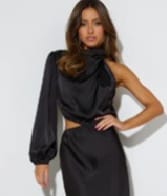Blog
Safety First: The Importance of Proper Fit in Beekeeper Suits for Sale

Beekeeping is a fascinating and rewarding hobby that has gained popularity in recent years. As more people become interested in maintaining their own hives, the demand for quality beekeeping equipment, particularly beekeeper suits, has risen. Among the myriad of considerations that go into purchasing a beekeeper suit, ensuring a proper fit stands paramount for both safety and comfort. This comprehensive article delves into the critical importance of proper fit in beekeeper suits and offers guidance on selecting the best suit for your needs.
Understanding the Role of a Beekeeper Suit
A beekeeper suit is an essential piece of protective equipment designed to safeguard beekeepers from bee stings. The suit typically includes a full-body cover, gloves, and a veil or hood to protect the face and neck. While bees are generally not aggressive, they can become defensive when they feel threatened, and a well-fitted beekeeper suit acts as a critical barrier against potential stings.
Why Proper Fit Matters
Protection from Stings
The primary purpose of a beekeeper suit is to prevent bee stings. A suit that fits properly ensures that there are no gaps or loose areas where bees can enter. Ill-fitting suits can leave vulnerable spots exposed, increasing the risk of stings. For example, sleeves that are too short or cuffs that are not snug enough can allow bees to crawl inside the suit.
Comfort and Mobility
Beekeeping involves various tasks that require a range of movements, from bending and lifting to reaching and squatting. A properly fitted suit allows for ease of movement without being restrictive. If a suit is too tight, it can be uncomfortable and limit mobility, making beekeeping tasks more challenging. Conversely, a suit that is too loose can be cumbersome and may get caught on equipment or hive components.
Enhanced Visibility and Focus
A suit that fits well helps maintain clear visibility and focus. An oversized hood or veil can obstruct vision, making it difficult to see and manage the bees effectively. A snug fit ensures that the veil stays in place, providing an unobstructed view and allowing the beekeeper to concentrate on the task at hand.
Factors to Consider for a Proper Fit
Accurate Measurements
The first step in ensuring a proper fit is to take accurate measurements of your body. Key measurements include chest, waist, hips, inseam, arm length, and overall height. Many manufacturers provide size charts that correlate these measurements to their suit sizes. It’s essential to follow these charts closely and choose a size that matches your measurements.
Material and Construction
The material and construction of the suit also play a crucial role in fit and comfort. Beekeeper suits are typically made from materials such as cotton, polyester, or a blend of both. Some suits also incorporate ventilated fabrics to improve airflow and reduce heat buildup. The construction should include reinforced seams, elastic cuffs, and adjustable closures to ensure a snug and secure fit.
Adjustability Features
Look for suits that offer adjustability features, such as elastic bands, Velcro straps, or drawstrings. These features allow you to customize the fit around key areas like the wrists, ankles, and waist. Adjustable hoods and veils are also important to ensure they stay securely in place.
Try Before You Buy
Whenever possible, try on the suit before making a purchase. This allows you to check the fit and ensure it provides adequate coverage and mobility. If buying online, consider purchasing from a retailer with a good return policy, allowing you to exchange the suit if it doesn’t fit properly.
Common Fit Issues and How to Address Them
Sleeves and Legs Too Short
Short sleeves and legs can leave your wrists and ankles exposed, increasing the risk of stings. To address this, choose a suit with elastic or adjustable cuffs that can be tightened to provide full coverage. If you’re on the taller side, consider looking for suits specifically designed for taller individuals.
Loose or Baggy Areas
While it’s important for the suit to be roomy enough to allow for movement, excessively loose or baggy areas can create entry points for bees. Ensure that the suit fits snugly around the wrists, ankles, and neck. Adjustable features can help tighten these areas for a better fit.
Tightness and Restricted Movement
A suit that is too tight can restrict your movement and make beekeeping tasks uncomfortable. If the suit feels tight in certain areas, consider sizing up or looking for suits with added stretch panels or gussets that provide extra room for movement.
Special Considerations for Different Beekeepers
Beginners
For those new to beekeeping, it’s crucial to invest in a suit that offers comprehensive protection and comfort. Beginners may not yet be accustomed to the presence of bees and may feel more secure in a suit that fits well and provides full coverage. Additionally, a well-fitted suit helps build confidence and reduces the likelihood of panic if bees become agitated.
Children
Beekeeping can be a family activity, and it’s essential to ensure that children have properly fitted suits. Children’s suits should provide the same level of protection as adult suits, with adjustable features to accommodate growth. It’s important to choose suits specifically designed for children, as adult suits modified to fit may not provide adequate protection.
Professional Beekeepers
For professional beekeepers who spend extended periods working with bees, comfort and durability are paramount. A suit that fits well and is made from high-quality materials can withstand frequent use and washing. Professionals should look for suits with additional features such as reinforced knees, ventilated panels, and ample pockets for tools and supplies.
How to Maintain a Proper Fit Over Time
Regular Inspections
Regularly inspect your beekeeper suit for signs of wear and tear. Check for any holes, frayed seams, or areas where the fabric may be thinning. Addressing these issues promptly can help maintain the suit’s protective capabilities.
Proper Washing and Storage
Follow the manufacturer’s instructions for washing and storing your suit. Proper care can prevent shrinkage and maintain the fabric’s integrity. Avoid using harsh detergents or bleach, as these can degrade the material and affect the fit.
Replacements and Upgrades
Over time, even the best-quality suits will need to be replaced. Pay attention to how your suit fits and feels during use. If it becomes too worn or no longer fits properly, it’s time to invest in a new one. Regularly upgrading your suit ensures you continue to have the best protection and comfort.
Real-Life Stories: The Importance of Proper Fit
Case Study 1: The Experienced Beekeeper
John has been beekeeping for over a decade. He recalls an incident early in his beekeeping journey when he wore a suit that was slightly too loose around the wrists. During a hive inspection, a bee managed to crawl inside his sleeve, resulting in multiple stings on his arm. Since then, John has always ensured his suits fit snugly and has not experienced a similar issue again.
Case Study 2: The Beginner Beekeeper
Emily, a novice beekeeper, purchased her first suit online without checking the size chart carefully. When the suit arrived, she found it was too tight and restricted her movement. She struggled to perform basic tasks and felt uncomfortable throughout her hive inspections. After exchanging the suit for the correct size, Emily noticed a significant improvement in her ability to manage the bees and felt more at ease.
Case Study 3: The Child Beekeeper
Sam’s parents introduced him to beekeeping when he was eight years old. They made sure to get him a suit that fit properly and provided full coverage. Thanks to the well-fitted suit, Sam felt confident and safe while helping with the hives. His positive experience sparked a lifelong interest in beekeeping, and he continues to enjoy the hobby as a teenager.
Where to Buy Beekeeping Accessories
When looking to buy beekeeping accessories, including your beekeeper suit, it’s essential to choose reputable retailers that offer a wide range of high-quality products. These accessories can include gloves, hive tools, smokers, and more. Ensuring that your accessories are as well-fitted and reliable as your suit contributes to a safer and more efficient beekeeping experience. Online stores often provide detailed product descriptions, size charts, and customer reviews, making it easier to find the right fit and best quality gear for your needs.
Conclusion
In the world of beekeeping, safety and comfort go hand in hand. The proper fit of a beekeeper suit is essential to protect against stings, ensure ease of movement, and enhance the overall beekeeping experience. By taking accurate measurements, considering material and construction, and looking for adjustable features, beekeepers can find suits that provide the best fit. Whether you are a beginner, a child, or a seasoned professional, investing in a properly fitted beekeeper suit is a critical step towards a safe and enjoyable beekeeping journey.
So, the next time you’re in the market for a beekeeper suit for sale, remember that safety first means prioritizing the right fit. Your comfort, mobility, and protection depend on it, ensuring that your beekeeping endeavors are both productive and pleasurable. Happy beekeeping!
Frequently Asked Questions (FAQs)
1. Why is the proper fit of a beekeeper suit important?
The proper fit of a beekeeper suit is crucial because it ensures complete coverage and protection from bee stings. A well-fitted suit prevents bees from entering through gaps or loose areas, thereby reducing the risk of stings and ensuring comfort and mobility during beekeeping activities.
2. How do I determine the right size for a beekeeper suit?
To determine the right size for a beekeeper suit, take accurate measurements of your chest, waist, hips, inseam, arm length, and overall height. Use these measurements to refer to the size chart provided by the manufacturer. If you’re between sizes, consider the adjustability features of the suit to ensure a snug fit.
3. What materials are best for beekeeper suits?
Beekeeper suits are typically made from cotton, polyester, or a blend of both. Some suits also feature ventilated fabrics for improved airflow. The best material depends on your specific needs, such as climate conditions and personal comfort preferences. Cotton suits are breathable and comfortable, while polyester suits are durable and easy to clean.
Blog
Welcome to Look What Mom Found-https:// lookwhatmomfound.com- Your Ultimate Family Blog & Daily Life Hacks Resource

Introduction https:// lookwhatmomfound.com
Welcome to Look What Mom Found, your go-to resource for everything related to family life and daily hacks! Founded by Melinda and Rob, this blog is more than just a collection of articles—it’s a community where parents can find support, inspiration, and practical solutions to everyday challenges. Whether you’re seeking parenting tips, delicious recipes, travel advice, or honest product reviews, Look What Mom Found is here to help navigate the wonderful journey of family life.
Meet the Founders: Melinda and Rob
Melinda and Rob started Look What Mom Found with a shared passion for helping families thrive. Melinda, a former teacher, and Rob, an engineer, found themselves constantly sharing tips and advice with friends and family. They realized there was a need for a platform where their insights could reach a broader audience. With two young children of their own, they understand the joys and struggles of parenthood firsthand. Their goal is to create a supportive community where parents can learn from each other’s experiences and celebrate the everyday moments that make family life special.
Parenting Tips
Expert Parenting Tips for Every Stage
Parenting is a journey filled with different stages, each presenting its own unique challenges and rewards. At Look What Mom Found, we offer expert advice tailored to each phase of your child’s development.
Newborn Care
Welcoming a newborn into your family is a joyous occasion but can also be overwhelming for new parents. Here are some essential tips to help you navigate the early days:
- Establishing a Routine: Setting a predictable schedule can help both parents and babies adjust to life at home.
- Feeding and Sleeping Tips: Advice on breastfeeding, bottle feeding, and establishing healthy sleep habits.
- Bonding Activities: Ways to bond with your newborn through skin-to-skin contact, baby massage, and gentle play.
Toddler Troubles
Toddlers are curious explorers who can test boundaries and keep parents on their toes. Here are some strategies for common toddler challenges:
- Positive Discipline: Techniques for setting limits while promoting positive behavior.
- Potty Training: Tips for successful potty training and dealing with setbacks.
- Handling Tantrums: Ways to manage and prevent tantrums with patience and understanding.
Teenage Challenges
Navigating the teenage years requires patience, communication, and a supportive environment. Here’s how to tackle some common teenage issues:
- Effective Communication: Tips for fostering open communication with your teen.
- Setting Boundaries: Establishing rules and expectations while respecting your teen’s need for independence.
- Peer Pressure and Social Media: Guidance on helping your teen navigate friendships and social media responsibly.
Daily Life Hacks
Daily Life Hacks to Simplify Your Family Life
Managing a busy family schedule while keeping a household running smoothly can feel like a juggling act. Look What Mom Found shares practical life hacks to make daily routines easier and more efficient.
Home Organization
A clutter-free home can reduce stress and create a more peaceful environment for your family. Try these organization tips:
- Decluttering Strategies: How to simplify and organize belongings room by room.
- Storage Solutions: Creative ways to maximize storage space in small areas.
- Daily Cleaning Routine: Establishing a manageable cleaning schedule for maintaining cleanliness.
Time Management
Balancing work, school, extracurricular activities, and family time requires effective time management skills. Here’s how to make the most of your day:
- Prioritization Techniques: Identifying and prioritizing tasks to stay focused and productive.
- Family Calendar: Using a shared calendar to keep track of appointments, deadlines, and family events.
- Batch Cooking: Preparing meals in advance to save time during busy weekdays.
Budgeting Tips
Managing family finances is crucial for long-term stability and reducing financial stress. Consider these budgeting tips:
- Creating a Household Budget: Steps to create a budget that aligns with your family’s financial goals.
- Saving Strategies: Practical ways to save money on groceries, utilities, and entertainment.
- Teaching Kids About Money: Tips for instilling financial literacy in children through allowances and savings accounts.
Recipes
Delicious and Easy Family Recipes
Mealtime is an opportunity for families to come together and enjoy delicious food. Look What Mom Found shares a variety of recipes that are nutritious, easy to prepare, and loved by both kids and adults.
Quick Weeknight Dinners
When time is limited, these quick and easy dinner recipes are perfect for busy evenings:
- One-Pot Pasta: Recipes that require minimal cleanup and are ready in under 30 minutes.
- Sheet Pan Meals: Healthy and flavorful dishes that can be roasted together on a single pan.
- Instant Pot Favorites: Time-saving recipes that cook quickly under pressure.
Healthy Snacks
Nutritious snacks are essential for keeping energy levels up throughout the day. Try these tasty and wholesome options:
- Homemade Granola Bars: Recipes packed with oats, nuts, and dried fruits for a satisfying snack.
- Yogurt Parfaits: Layered with fresh fruits, nuts, and honey for a refreshing treat.
- Vegetable Dips: Pairing crunchy veggies with creamy dips like hummus or tzatziki.
Vegetarian Options
Whether you follow a vegetarian diet or simply enjoy meatless meals, these recipes are sure to please the whole family:
- Vegetarian Chili: Hearty and flavorful chili packed with beans, vegetables, and spices.
- Stuffed Bell Peppers: Delicious peppers filled with quinoa, black beans, corn, and cheese.
- Spinach and Mushroom Lasagna: Layers of pasta, ricotta cheese, and a savory tomato sauce.
Travel Tips
Family Travel Tips for Stress-Free Vacations
Traveling with kids can be challenging, but with the right preparation, it can also be incredibly rewarding. Look What Mom Found offers practical tips to make your family vacations memorable and stress-free.
Packing Essentials
Before you embark on your next adventure, make sure you have these essential items packed:
- Travel Documents: Passports, visas, and any necessary travel insurance documents.
- Medication and First Aid Kit: Prescriptions, over-the-counter medications, and basic first aid supplies.
- Entertainment for Kids: Books, games, and electronics to keep kids entertained during travel.
Traveling with Kids
Keep kids comfortable and entertained while traveling with these tips:
- Snack Packs: Pack healthy snacks and drinks to keep hunger at bay during long journeys.
- Travel Games and Activities: Simple games like scavenger hunts or coloring books to keep kids engaged.
- Rest Breaks: Plan regular breaks to stretch, use restroom facilities, and let kids burn off energy.
Budget Travel
Explore the world without breaking the bank with these budget-friendly travel strategies:
- Off-Season Travel: Taking advantage of lower prices and fewer crowds during shoulder seasons.
- Accommodation Options: Consider family-friendly hostels, vacation rentals, or budget hotels.
- Local Cuisine: Sampling affordable local dishes and markets for authentic dining experiences.
Product Reviews
Honest Reviews of Family-Friendly Products
Choosing the right products for your family can make a big difference. Look What Mom Found provides unbiased reviews of products designed to enhance family life.
Baby Gear
From strollers to car seats, here are some of our top recommendations for essential baby gear:
- Convertible Car Seats: Reviews of car seats that grow with your child from infancy through toddlerhood.
- Diaper Bags: Stylish and functional bags for keeping baby essentials organized on the go.
- Baby Monitors: High-tech monitors with features like video streaming and temperature sensors.
Home Gadgets
Discover innovative gadgets that can simplify life at home for modern families:
- Smart Home Devices: Reviews of smart thermostats, lighting systems, and security cameras.
- Kitchen Appliances: Must-have appliances like multi-cookers and air fryers for easy meal preparation.
- Cleaning Tools: Efficient vacuum cleaners and steam mops to keep your home clean and tidy.
Educational Toys
Encourage learning and development with these educational toys and games:
- STEM Toys: Hands-on kits that teach science, technology, engineering, and math concepts through play.
- Board Games: Family-friendly games that promote teamwork, critical thinking, and creativity.
- Books for Kids: Reviews of children’s books that inspire imagination and a love for reading.
Giveaways
Exciting Giveaways for Our Readers
At Look What Mom Found, we love giving back to our community! Participate in our current giveaways for a chance to win amazing prizes.
How to Enter
Entering our giveaways is easy! Simply follow the instructions provided on each giveaway post, which may include actions like subscribing to our newsletter, following us on social media, or sharing the giveaway with friends.
YOU MAY ALSO LIKE
The Top 4 Household Tasks are Especially Difficult for Busy Moms
Conclusion
At Look What Mom Found, we strive to be your go-to resource for all things family and life hacks. Whether you’re seeking parenting tips, delicious recipes, travel advice, or honest product reviews, our goal is to simplify and enhance your family’s daily life. Join our community today and embark on a journey of discovery and support with us!
FAQs
1. What topics does Look What Mom Found cover?
- Look What Mom Found covers a wide range of topics including parenting tips, family recipes, travel tips, product reviews, and daily life hacks.
2. Who are the founders of Look What Mom Found?
- Melinda and Rob are the passionate founders of Look What Mom Found, dedicated to sharing their experiences and tips for family life.
3. How can I participate in Look What Mom Found giveaways?
- Keep an eye on our blog for current and upcoming giveaways. Follow the instructions provided in each giveaway post to enter and stand a chance to win exciting prizes.
4. Are the product reviews on Look What Mom Found unbiased?
- Yes, our product reviews are honest and unbiased, aiming to provide helpful insights into family-friendly products like baby gear, home gadgets, and educational toys.
5. How can I contact Look What Mom Found for inquiries?
- You can contact us through our website’s contact form or connect with us on social media. Visit our Contact Us page for more details.
Blog
Navigating DVC Availability during Peak Seasons

Are you struggling to secure Disney Vacation Club (DVC) reservations during peak times? You’re not alone. DVC availability can be a challenge, especially during holidays and school vacations.
In this blog, we will explore strategies to improve your chances of booking your dream vacation. Learn the best times to check for openings and how to maximize your membership points.
Get insider tips from seasoned DVC members. Let’s make your next Disney trip unforgettable!
Booking Strategies for High-Demand Times
It’s important to book as early as possible to increase your chances of getting the reservation you want. Members of DVC can book their vacation club rentals 11 months in advance and other resorts 7 months in advance.
So, planning is very important, especially for a very crowded Disney destination that a lot of people want to visit. You can also improve your chances of success during busy times by being flexible with dates and room types.
Leveraging Waitlists Effectively
If the dates you want are taken, the waitlist system can be very helpful. You may still be able to get a reservation if someone cancels by putting your name on a waitlist.
You should stay on more than one waitlist. Keep a close eye on your waitlists and be ready to confirm right away if a spot opens up.
Exploring Alternative Resort Options
It’s a good idea to check out other DVC resorts because your first choice might not be available during busy times. Each resort has its activities and features that can make your vacation just as fun.
One way to get more choices and make the booking process easier is to think about other options. If you look into these alternatives, you might find some real gems.
Planning for Special Events and Holidays
Peak seasons frequently align with holidays and other occasions at Disney parks, increasing competition for available dates. If you want to visit during a busy time, like Mickey’s Not-So-Scary Halloween Party or Epcot’s Food & Wine Festival, make your plans as far in advance as you can. Finding the ideal times to make your reservations can be made easier by being aware of the timetables for these events.
Using Points Strategically
Making good use of your DVC points can help you get better availability during peak season. Instead of making one long reservation, you might want to split your stay up into several shorter ones.
With this method, you may also be able to stay at more than one resort during your trip. Also, keep an eye on the DVC point charts and the seasons, because the number of points you need changes with the seasons.
Checking Resale Listings
If you are struggling to find availability through the traditional DVC booking system, it may be worth checking out timeshare market resale listings. Resale points can sometimes be more flexible and cost-effective. Many online platforms offer all DVC resale listings that can supplement your existing points or give you access to resorts that are otherwise booked out.
Unlocking Hidden DVC Availability Secrets
It can be hard to figure out DVC availability during busy times, but you can do it if you know what to do. Plan, make good use of waitlists, and be open to changing your plans.
It’s important to look into other resorts and know when special events are happening. You can also improve your chances by making good use of your points and looking at resale listings.
Remember that careful planning and creativity can help you find hidden DVC options. Have a great vacation!
Did you like this guide? Please browse our website for more!
Blog
Is the Universe Testing Me to See If I’m Ready? Understanding the Signs and How to Respond

Introduction Is the Universe Testing Me to See If I’m Ready
Ever wondered if the universe is throwing obstacles your way to see if you’re prepared for your dreams? If so, you’re not alone. Many spiritual seekers ponder whether the challenges they face are tests designed by the universe to ensure they’re ready for what they desire. Understanding these tests is crucial for personal growth and achieving your goals. This post will guide you through the signs that the universe might be testing you, how to recognize and interpret these tests, and how to respond effectively.
What Does It Mean for the Universe to Test You?
Definition
The idea that the universe tests us is rooted in the belief that life isn’t random. Instead, it’s influenced by a higher power, destiny, or spiritual forces that help us grow and prepare for our desires. These tests might manifest as challenges, setbacks, or emotional triggers, all designed to build your resilience and readiness.
Purpose
Why would the universe test you? Think of it as a cosmic quality check. Just like a diamond undergoes extreme pressure to form, you might face tough situations to transform into your best self. The universe wants to ensure you’re really ready for the next big thing in your life, whether it’s a new job, a relationship, or a personal milestone.
Common Misconceptions
It’s easy to misinterpret these tests as punishment or bad luck. However, the universe isn’t out to get you. It’s not about making your life harder just for the fun of it. Instead, these experiences are opportunities for growth. They’re like training sessions designed to strengthen your mind, body, and spirit.
Signs That the Universe Is Testing You
Unexpected Challenges
One of the most evident signs is the sudden appearance of obstacles. You might be cruising along when, bam, a problem arises out of nowhere. These unexpected challenges can be anything from a sudden job loss to an argument with a loved one. They force you to pause and re-evaluate your path.
Repeated Patterns
Have you noticed the same scenarios playing out repeatedly? Maybe you keep encountering the same type of difficult boss at every job, or you continually find yourself in unhealthy relationships. These recurring patterns are likely the universe’s way of highlighting areas that need your attention.
Emotional Triggers
Strong emotional reactions can also indicate that you’re being tested. These might include feelings of anger, sadness, or anxiety that seem disproportionate to the situation. These emotions are signals to dig deeper and understand what’s really going on inside you.
Synchronicities
Meaningful coincidences, or synchronicities, are another sign. These might be random events or encounters that seem too perfect to be mere chance. They often act as nudges from the universe, guiding you towards or away from something.
How to Recognize and Interpret These Tests
Self-Reflection
Taking time for introspection is essential. By reflecting on your experiences and emotional responses, you can start to see patterns and understand what the universe is trying to teach you. This might involve asking yourself questions like, “Why does this upset me so much?” or “What can I learn from this situation?”
Journaling
Keeping a journal can be incredibly helpful for tracking these patterns and gaining insights. Write down your thoughts, feelings, and experiences regularly. Over time, you’ll start to see connections and understand the lessons the universe is presenting to you.
Seeking Guidance
Sometimes, you might need external help. Whether it’s from a mentor, spiritual guide, or therapist, seeking advice can provide you with different perspectives that you might not have considered. These individuals can help you interpret the signs and offer practical advice on how to proceed.
Meditation and Mindfulness
Practices like meditation and mindfulness can help you stay grounded and aware of the present moment. They allow you to tune into your inner self and the universe’s messages. Over time, these practices can improve your ability to recognize and interpret the tests you’re facing.
How to Respond to the Universe’s Tests
Stay Positive
Maintaining a positive mindset is crucial. It might be challenging, especially when you’re in the thick of it, but positivity can significantly impact how you handle these tests. Remember, every challenge is an opportunity for growth and learning.
Adaptability
Flexibility and openness to change are essential. Life is unpredictable, and the universe’s tests often require you to adapt. Being rigid in your thinking or actions can hinder your progress. Instead, try to see every situation as a chance to learn something new and improve yourself.
Learning and Growth
View each test as a lesson. What is the universe trying to teach you? By focusing on the learning aspect, you can turn even the most challenging situations into valuable growth experiences. This shift in perspective can make a significant difference in how you handle these tests.
Taking Action
Finally, taking proactive steps to demonstrate your readiness and commitment is crucial. This might involve making changes in your behavior, setting new goals, or taking steps towards your desires. The universe rewards action, so show that you’re ready for what you want.
Real-Life Examples and Testimonials
Case Studies
Consider the story of Sarah, who faced numerous setbacks in her career. Despite her qualifications, she kept missing out on promotions. Instead of giving up, she used these experiences to reflect on her approach and improve her skills. Eventually, she landed her dream job, realizing that the universe was preparing her for this opportunity all along.
Personal Anecdotes
John, another example, found himself in a cycle of unhealthy relationships. Each breakup left him feeling defeated. However, through self-reflection and seeking guidance, he recognized the patterns and worked on his self-worth. Today, he’s in a loving relationship, grateful for the tests that led him to his partner.
Expert Insights
According to spiritual leader Deepak Chopra, “Challenges are gifts that force us to search for a new center of gravity. Don’t fight them. Just find a new way to stand.” His words highlight the importance of viewing tests as opportunities for growth and transformation.
Common Questions and Answers
Why does the universe test us?
The universe tests us to ensure we’re ready for our desires, to build resilience, and to help us grow into our best selves.
How do I know if I’m being tested?
Signs include unexpected challenges, repeated patterns, strong emotional reactions, and meaningful coincidences or synchronicities.
What should I do when I recognize a test?
Stay positive, be adaptable, focus on learning and growth, and take proactive steps to demonstrate your readiness.
Can I avoid these tests?
Tests are a natural part of life and personal growth. While you can’t avoid them, you can change how you respond to them, making the process smoother and more beneficial.
How can I seek guidance during a test?
You can seek guidance from mentors, spiritual guides, therapists, or trusted friends and family. Their perspectives can provide valuable insights and support.
YOU MAY ALSO LIKE
The Role of Lifestyle Changes in Enhancing the Effectiveness of Alzheimer’s Treatments
Conclusion
The universe’s tests are not meant to break you but to build you into the person capable of achieving your dreams. By understanding the signs, recognizing the tests, and learning how to respond effectively, you can turn these challenges into opportunities for growth and transformation. Remember, every test is a step towards your ultimate goal. So, embrace them, learn from them, and trust the process.
Five Most Searched FAQs on Google and Answers
1. What are the signs that the universe is testing me?
The signs include unexpected challenges, repeated patterns, strong emotional reactions, and meaningful coincidences or synchronicities.
2. How do I respond to the universe’s tests?
Stay positive, be adaptable, focus on learning and growth, and take proactive steps to demonstrate your readiness.
3. Can tests from the universe be avoided?
No, tests are a natural part of life and personal growth. While you can’t avoid them, you can change how you respond to them.
4. How can self-reflection help in recognizing tests?
Self-reflection helps you see patterns and understand what the universe is trying to teach you, allowing for growth and improved decision-making.
5. Where can I seek guidance when facing tests from the universe?
Seek guidance from mentors, spiritual guides, therapists, or trusted friends and family for valuable insights and support.
-

 Tech5 months ago
Tech5 months agoExploring the Features of Innocams: The Future of Security
-

 Home Improvement3 months ago
Home Improvement3 months agoEco-Friendly Round Rug Options for Sustainable Living in NZ
-

 How-To Guides2 months ago
How-To Guides2 months agoComprehensive Guide to Cockwarming: Enhancing Intimacy and Connection
-

 Fashion3 months ago
Fashion3 months agoBlack Magic: The Elegance and Sophistication of Ultimate Homecoming Dresses in Black
-

 Apps and Games3 months ago
Apps and Games3 months agoDiscover Tickzoo: The Ultimate Platform for Video Content Lovers and Creators
-

 Business5 months ago
Business5 months agoUnlock Potential: Explore Pikruos Services
-

 Blog3 weeks ago
Blog3 weeks agoPossiblyethereal: Exploring the Ethereal Unveiling Abstract Ideas
-

 Entertainment4 months ago
Entertainment4 months agoDiving into the Audio-Visual Experience with AV Tub: Innovating Our World of Media
















